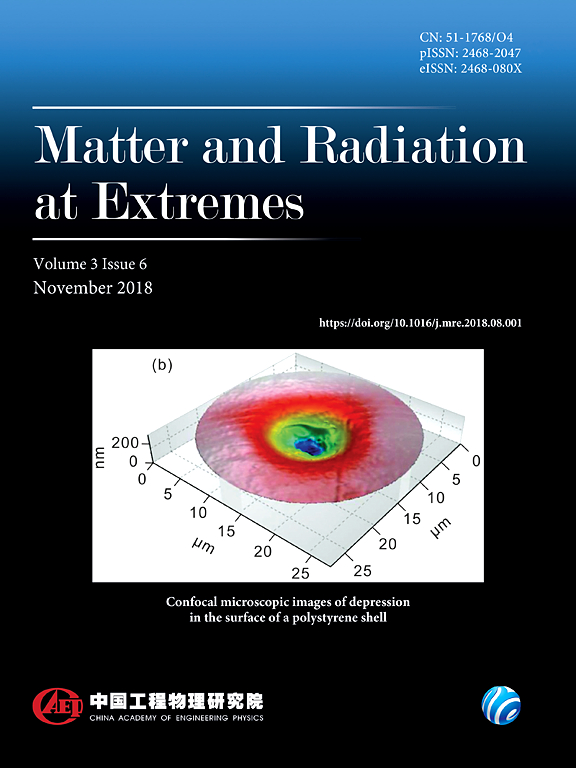Restoration of the focal parameters for an extreme-power laser pulse with ponderomotively scattered proton spectra by using a neural network algorithm
IF 4.7
1区 物理与天体物理
Q1 PHYSICS, MULTIDISCIPLINARY
引用次数: 3
Abstract
A neural network-based approach is proposed both for reconstructing the focal spot intensity profile and for estimating the peak intensity of a high-power tightly focused laser pulse using the angular energy distributions of protons accelerated by the pulse from rarefied gases. For these purposes, we use a convolutional neural network architecture. Training and testing datasets are calculated using the test particle method, with the laser description in the form of Stratton–Chu integrals, which model laser pulses focused by an off-axis parabolic mirror down to the diffraction limit. To demonstrate the power and robustness of this method, we discuss the reconstruction of axially symmetric intensity profiles for laser pulses with intensities and focal diameters in the ranges of 1021–1023 W cm−2 and ∼(1–4) λ, respectively. This approach has prospects for implementation at higher intensities and with asymmetric laser beams, and it can provide a valuable diagnostic method for emerging extremely intense laser facilities.用神经网络算法恢复具有重运动散射质子谱的极功率激光脉冲的焦点参数
提出了一种基于神经网络的方法,利用稀薄气体脉冲加速质子的角能分布,重建高功率紧密聚焦激光脉冲的焦点光斑强度分布图,并估计其峰值强度。出于这些目的,我们使用卷积神经网络架构。训练和测试数据集使用测试粒子法计算,激光描述以Stratton-Chu积分的形式进行,该积分模拟了由离轴抛物面镜聚焦到衍射极限的激光脉冲。为了证明该方法的有效性和鲁棒性,我们讨论了在1021-1023 W cm−2和~ (1-4)λ范围内的激光脉冲的轴对称强度分布的重建。该方法在高强度和非对称激光束下具有应用前景,可以为新兴的极强激光设备提供一种有价值的诊断方法。
本文章由计算机程序翻译,如有差异,请以英文原文为准。
求助全文
约1分钟内获得全文
求助全文
来源期刊

Matter and Radiation at Extremes
Physics and Astronomy-Atomic and Molecular Physics, and Optics
CiteScore
8.60
自引率
9.80%
发文量
160
审稿时长
15 weeks
期刊介绍:
Matter and Radiation at Extremes (MRE), is committed to the publication of original and impactful research and review papers that address extreme states of matter and radiation, and the associated science and technology that are employed to produce and diagnose these conditions in the laboratory. Drivers, targets and diagnostics are included along with related numerical simulation and computational methods. It aims to provide a peer-reviewed platform for the international physics community and promote worldwide dissemination of the latest and impactful research in related fields.
 求助内容:
求助内容: 应助结果提醒方式:
应助结果提醒方式:


